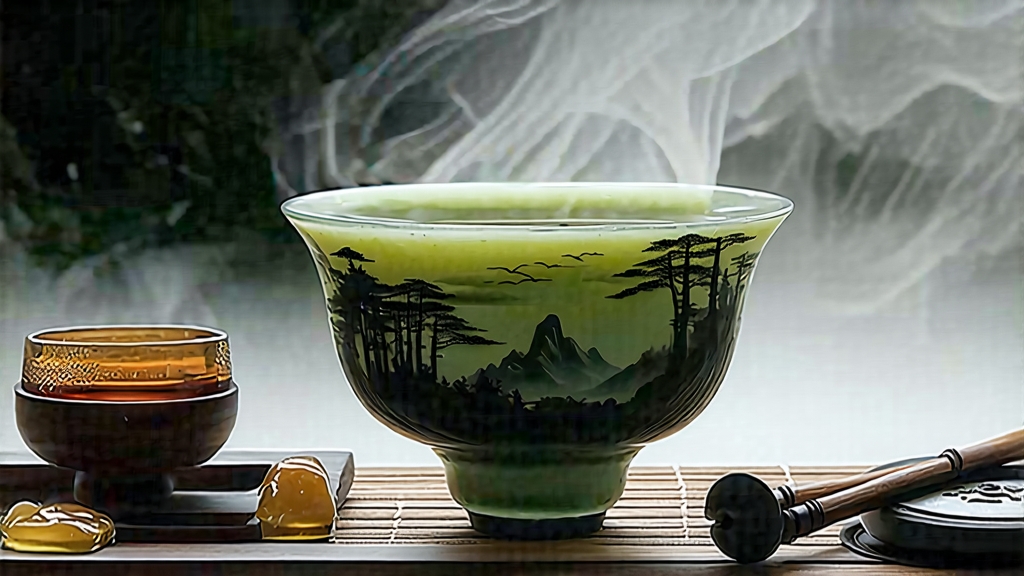
High above the East China Sea, where Guangdong Province’s coastline bends toward the South China Sea, the Phoenix Mountains rise like a green fortress. Between 350 m and 1,400 m elevation, clouds collide with granite peaks, feeding perennial streams and a forest canopy that smells of wild orchids and camphor. It is here, in this subtropical amphitheatre, that Phoenix Dancong—literally “single-bush”—has been turning fog, mineral soil, and centuries of human devotion into one of the most aromatic oolongs on earth.
Unlike most teas that are blended from hundreds of plants to achieve uniformity, true Dancong is picked from individual old trees, each genetically distinct and each capable of expressing a signature “xiang” or aroma that mimics flowers, fruits, spices, even confectionery. Local growers recognize at least thirty aroma profiles, from the famous “Honey Orchid” (Mi Lan Xiang) to the elusive “Ginger Flower” (Jiang Hua Xiang) and the almond-sweet “Almond Fragrance” (Xing Ren Xiang). The name Dancong therefore carries two meanings: a botanical reality—tea harvested from a single tree—and a sensory promise that every cup will sing a solo rather than a choir.
Historical records place tea gardens on Phoenix Mountain as early as the Southern Song dynasty (1127–1279). A 900-year-old mother tree, “Song Zhong,” still stands near Wudong village, its gnarled trunk wrapped in red cloth offerings. During the Ming, the region’s tea was tribute, carried by porters down narrow stone paths to the imperial court. By the Qing, local clans had developed the practice of cloning particularly fragrant trees through air-layering, creating the first named cultivars. When the 18th-century tea clipper trade opened global sea routes, Phoenix oolong sailed to Southeast Asia and earned the nickname “Hong Cha” among Cantonese migrants—ironically meaning “red tea,” because of its russet leaf color rather than black-tea processing.
Today the Phoenix Mountains are divided into three elevation bands: low (350–600 m), mid (600–900 m), and high (900 m and above). High-altitude gardens—especially Wudong, Daping, and Shiguping—produce the most sought-after leaves. Cool nights slow photosynthesis, concentrating aromatic precursors, while diurnal temperature swings can exceed 10 °C, thickening cell walls and creating the signature “mountain rhyme” (shan yun), a lingering coolness in the throat that connoisseurs compare to the echo of a bell.
Crafting Phoenix Dancong is a six-act drama spread across 24 hours. It begins at dawn, when pickers climb ancient stone steps wearing woven bamboo hats. Only the top three or four semi-mature leaves are plucked, because larger leaves contain the higher levels of nitrogen compounds needed for later fragrance formation. The harvest must reach the village processing hall by 10 a.m.; any delay oxidizes the leaf edges prematurely.
Withering starts outdoors: leaves are spread on bamboo screens set at 45° angles to the morning sun. Every ten minutes they are gently rattled to bruise epidermal cells, initiating enzymatic oxidation. After twenty minutes the trays are moved indoors to rest on raised racks, where mountain breeze continues dehydration. Around 2 p.m. the master “green-maker” begins the pivotal step: shaking. Five hundred grams of leaves are tossed vertically in a round rattan tray, falling back under their own weight. This repeated trauma ruptures cell walls, allowing polyphenols and air to meet. The edges turn crimson; the centers remain jade. Olfactory magic happens here: terpenes and norisoprenoids that smell of peach, gardenia, or licorice are unlocked.
Fixation follows at 230 °C in a drum roaster for exactly four minutes, halting oxidation at roughly 30 %—the hallmark of oolong. Rolling comes next, first mechanically then by hand, twisting leaves into the distinctive dark stripes that resemble dragonfly tails. The most labor-intensive act is baking. Using a charcoal pit sunk into the earth, the tea is baked in thin layers on bamboo sieves stacked inside a ring of fired bricks. Temperature is controlled by spreading or raking the embers of longan-wood charcoal, whose slow, even heat drives off residual moisture while caramelizing sugars. A high-grade Dancong may receive three separate bakes over two months, each lasting eight hours and followed